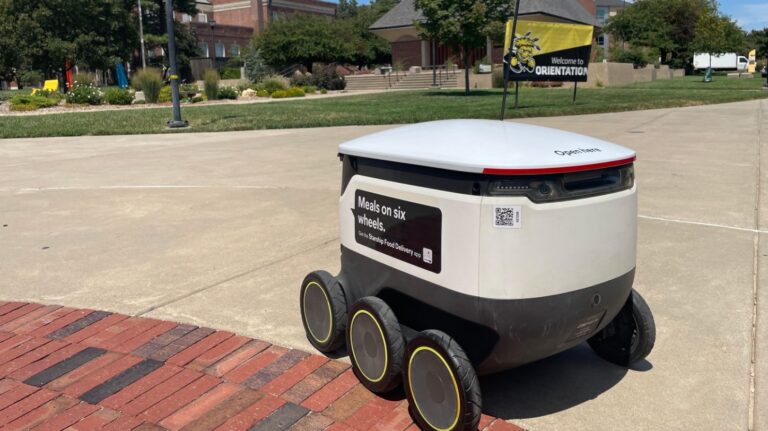Earlier this week, Wichita State University introduced a fleet of autonomous, on-demand robots to deliver food from campus restaurants.
After partnering with Starship Technologies, a company that develops autonomous delivery robots, Wichita’s Dining has launched a robotic food delivery service on campus.
Food can be delivered from: RSC Starbucks; Panda Express; Freddy’s Frozen Custard; Tu Taco; Market at Groundhouse; Cargill Café; and Black & Gold Grill: A Delivery Ghost Kitchen.
Students can use the service in conjunction with their meal plan, credit card and Shocker dollars, an on-campus currency provided by the university.
The delivery app works by users choosing from a range of food or drink items, then dropping a pin where they want their delivery to be sent. They can also watch as the robot makes its journey to them, via an interactive map.
Once the robot arrives, the user receives an alert, and can then meet and unlock their delivery through the app.
Deliveries reportedly take just a matter of minutes, depending on the items ordered and the distance the robot needs to travel. Each robot is designed to carry the equivalent of about three shopping bags of goods.
“We’re pleased to announce Wichita State University as our newest university,” said Chris Neider, vice president of business development at Starship Technologies.
“The university has a strong reputation as a research university and we think the campus community will enjoy learning about new technologies first-hand with our robots. Getting to regularly interact with our robots will not only show the convenience of autonomous delivery but will be a fun experience for all Shockers.”
The robots use a combination of machine learning, artificial intelligence and sensors to travel on pavements and navigate around obstacles.
What’s more, the computer vision-based navigation system was developed to help the robots map their environment to the nearest inch and cross roads, climb curbs, travel at night and operate in both rain and snow.
Though they can operate autonomously, a team of humans can also monitor the bots’ progress remotely and take control if needed.





